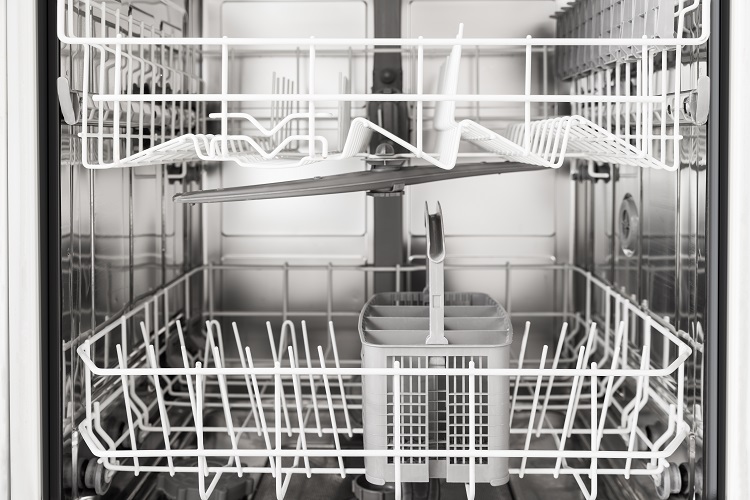
We sometimes depend on our dishwashers to provide us with clean dishes and they can be a real-life saver when we have extremely busy lives. It can be deemed as an almost pointless task to clean your dishwasher as surely it is cleaning itself at the same time as it cleans the dishes. Unfortunately, this is not the case. Your dishwasher needs to be cleaned regularly to avoid a build-up of food, grease, undissolved detergent and water minerals. Overtime an unclean dishwasher will leave spots and streaks on your dishes and can lead to a bad odour or even faults that will cost a lot to repair.
Here we discuss the best way to clean your dishwasher and keep it in the best possible condition.
Step 1- Remove bits of food
Frequency: Every Day
Get in a habit of removing any leftover bits of food from the dishwasher after every cycle. Pull the bottom drawer out so you can easily see the food.
Step 2- Wipe the Dishwasher Door
Frequency: Weekly
Once a week, wipe the inside of your dishwasher door with a damp cloth to remove any residue. Make sure you get into the door seal as this is a popular place the grime can build up without you noticing and will lead to a bad odour.
Step 3- Rinse Filter
Frequency: Once a week
The filter is an important part of your dishwasher to ensure a good clean. If the filter is not kept clean, your dishes will suffer as a result. Each week if possible, remove the filter, rinse in the sink and scrub with a soft brush. Clean around the filter in the machine as well.
Step 4 - Wipe down the exterior of the washing machine
Frequency: Weekly
Don’t forget about cleaning the outside of the dishwasher as well. Regularly wipe down the exterior to keep it fingerprint and smudge-free. Only use soft clothes as anything harsher like an abrasive cleaning pad can end up scratching it.
Step 5- Deep clean
Frequency: Monthly
Once a month, try and deep clean your dishwasher. You can purchase specific dishwasher cleaners from all the top brands which are simple to use. Merely take the sticker off the lid and place upside down on the bottom shelf before putting it through a wash cycle.
Alternatively, you can save money and achieve the same results but using common household items. Place a glass measuring jug or bowl of white vinegar on the top rack and run on a normal cycle. Both of these methods will help tackle any residue grime and dirt.
You can follow this up by sprinkle baking soda on the bottom of the dishwasher and putting on a hot short cycle. This will leave your washing machine gleaming. Avoid using bleach as although it will clean your dishwasher it can actually lead to the seals and other parts of the dishwasher becoming damaged.
Step 6- Keep rinse aid and dishwasher salt topped up
Frequency: Monthly
Rinse Aid is necessary to help dishes dry and avoid streaking, whereas dishwasher salt helps prevent a build-up of limescale and softens the water, which leads to a better clean. Luckily, most dishwashers will indicate to you when these need refilling to help you remember.
Step 7- Clean Spray Arms
Frequency: Up to every 6 months
Remove the spray arms, clean them and poke through the holes to ensure they are not blocked as this will affect the quality of the cleaning. Rinse the arms under the tap and then place back in the machine.
Step 8- Combat odour by running a hot cycle
Frequency: Every 6 months
Every now and then, just a couple of times a year, run your dishwasher on a hot wash with nothing in it. This is to help stop your machine from smelling. This is important if the majority of the time you use the eco-friendly settings on your machine as the water will not get as hot and as a result, the build-up can increase.
At the end of the day, if your dishwasher is not clean, then your dishes will not be clean either. Banish food and grime build-up with these 8 simple steps.